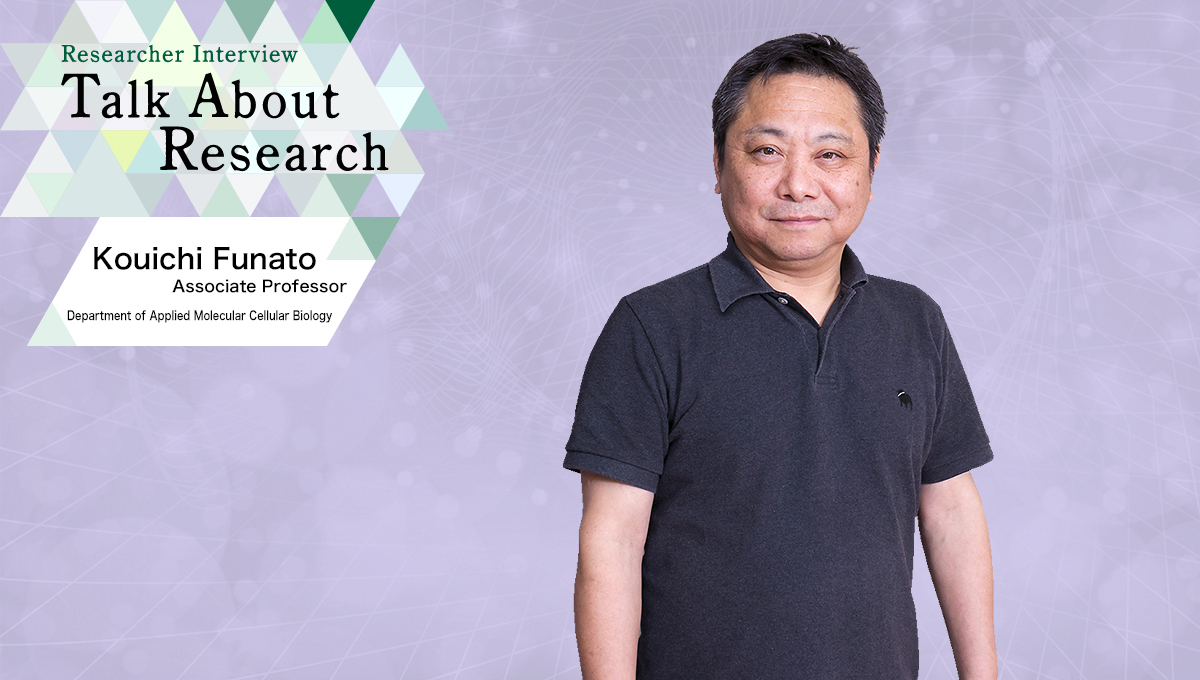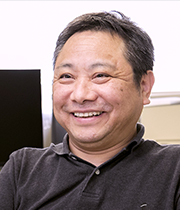Challenging for the elucidation of molecular mechanisms of lipid synthesis
and transport and cellular functions of lipids focusing on “ceramide”!
Specializing in molecular biology, Dr. Funato’s research group is working on a wide variety of investigations focusing on lipids as components of biological membranes. Their research can be comprehensively described as follows:
He says, “We want to elucidate at the molecular level how biomembrane-constituent lipids are synthesized, transported, and maintained in cells. Our interests also include how cells sense lipid behaviors and how cellular functions are controlled thereby. On the basis of the results from such basic research, our efforts aim to develop new biotechnological applications using yeasts, for example, a mass production system for lipids that can be used as raw materials for foods, cosmetics, and pharmaceuticals.”
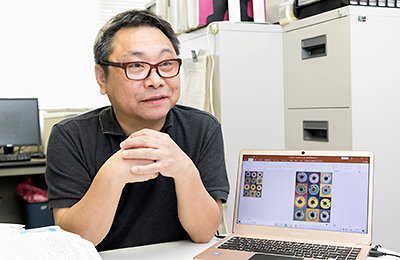
According to Dr. Funato, common research targets in the world have shifted from “genes and genomes” to “proteins and post-genomes” following the completion of the human genome program, and lipid research has entered a new phase known as the “next-generation post-genome” or the “last frontier in biology.”
“The lipid is not merely a molecular entity that constitutes biomembranes, but it acts as a signaling molecule or platform in a wide variety of biological phenomena found in the cells. Thus, lipid research is expected to lead to the discovery of new cellular mechanisms and phenomena that remain unknown to anyone in the world.”
Additionally, such research uses “yeasts” as a model organism for the following reasons:
The yeast is a unicellular but eukaryotic organism. Although its appearance is widely different from the human being’s, many biological phenomena in yeast cells are the same as those in human cells. It can therefore be said that yeast-based research will lead to discoveries of basic principles, or ubiquitous mechanisms, in life, because the basic molecular mechanisms of biological phenomena are conserved in yeasts to humans. Another reason is that yeasts are very favorable as model organisms in molecular biology research in several aspects, such as quick, simple, stable, and inexpensive culture and easy genomic modification.
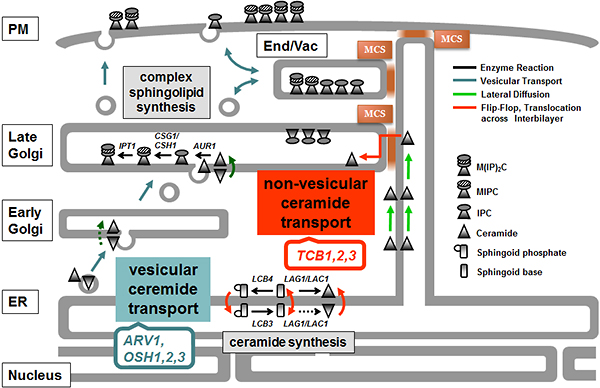 Fig 1: Molecular mechanisms of synthesis and trafficking of sphingolipids in yeast (schematic diagram)
Fig 1: Molecular mechanisms of synthesis and trafficking of sphingolipids in yeast (schematic diagram)
Among the various kinds of lipids, Dr. Funato pays special attention to “ceramide,” which is indispensable for biological functions as a precursor to complex sphingolipid. Since excessive accumulation of ceramide in cells induces apoptosis (programmed cell death), ceramide is often called a “messenger of cell death”; however, it is also present outside the cell, e.g., in the intercellular lipid layer of keratinocytes in our skin, where ceramide retains water and serves as a barrier against external stimuli, thus playing a key role in the maintenance of skin functions.
Dr. Funato says, “While a lack of ceramide is reportedly associated with dry skin, atopic dermatitis, and other troubles, a great many ceramide-based products are available, including therapeutics and cosmetics. The abundance of ceramide in animals and plants, however, is very low, and its extraction and purification are difficult, so the market price of ceramide as a raw material for such commercial products is extremely high.” This is why he endeavored to develop a mass production system for lipids as an application of his research.
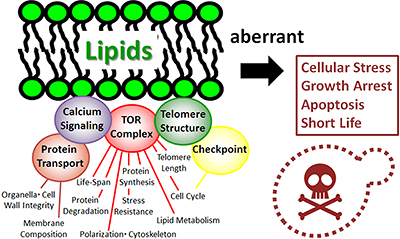 Fig 2: Cellular functions controlled by lipids (schematic diagram)
Fig 2: Cellular functions controlled by lipids (schematic diagram)
A discovery in lipid transport research for the first time in the world,
with further achievements through continued research for approximately 20 years
He is a graduate of a faculty of pharmaceutical sciences. Then, what drove him to lipid research? It was a study using liposome, a synthetic carrier made of lipids.
“When I was a student at a graduate school of pharmaceutical sciences, I was conducting research to attain the goal of delivering drugs selectively to affected sites of the body. Liposome is an artificial membrane made of lipids. Now imagine administering a drug included in liposome into the body. If delivering the liposome with something that binds specifically to cancer attached to its surface, no side effects would occur because the drug does not go to any other organs. This drug delivery system, however, could not be useful unless the drug reaches the target molecule in the cell and exhibits its effect there. Even after entering the cell, the drug would be ineffective at other sites in the cell. Hence, I idealized the drug delivery system would be meaningless without knowing how substances move in the cell. In those days, I became much interested in what occurs and how things move in the cell. After obtaining a doctoral degree, I went to the University of Washington in St. Louis as an overseas fellow of the Japan Society for the Promotion of Science to study intracellular phenomena.”
Under the tutelage of Dr. Philip D. Stahl, who discovered the exosome (※1) in 1983, Dr. Funato devoted himself to studying the transport of substances taken up into the cells to the lysosome, an intracellular digestive organ.
Two years later, he entered the University of Basel in Switzerland (and then moved to the University of Geneva) seeking new research, where he conducted further research on lipid transport in the cells under Dr. Howard Riezman.
 Around 2001, with colleagues at the laboratory of Dr. Howard Riezman at the University of Basel in Switzerland.
Around 2001, with colleagues at the laboratory of Dr. Howard Riezman at the University of Basel in Switzerland.Dr. Funato on the left in the rear row, and Dr. Howard Riezman on the left in the front row.
“Dr. Howard Riezman is a pioneer in yeast endocytosis (※2) research. He discovered that endocytosis occurs in yeasts, and identified many genes essential for endocytosis using yeast genetics. When I was in his lab, researchers were working on elucidating the molecular mechanisms of endocytosis and also on the sorting and transport of proteins from the endoplasmic reticulum.”
- ※1:The exosome is considered to play a key role in cellular communication by transporting molecules among the cells; in recent years, there are major expectations for its clinical applications as a biomarker or treatment.
- ※2:Endocytosis is a process by which cells take up extracellular substances.
The lipid transport research conducted by Dr. Funato at that place had a new theme none had investigated so far. Consequently, he showed for the first time in the world in 2001 that in budding yeast, ceramides synthesized in the endoplasmic reticulum are transported to the Golgi apparatus and that there are two pathways for ceramide transport, one via small vesicles (※3) from the endoplasmic reticulum membranes and one via membrane contact sites between the endoplasmic reticulum and Golgi apparatus (J Cell Biol. 2001).
- ※3:The COPII vesicle discovered by Dr. Randy W. Schekman, recipient of the 2013 Nobel Prize in Physiology or Medicine.
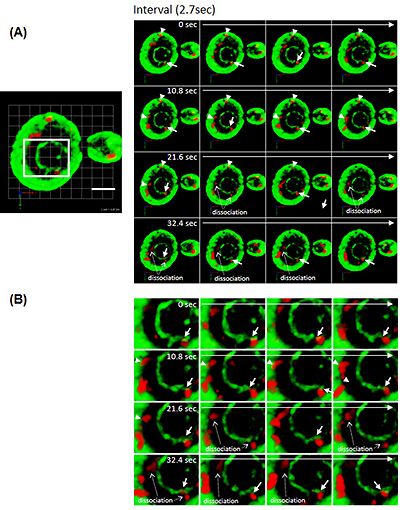 Fig 3: Time-lapse observation of membrane contact sites between the endoplasmic reticulum and Golgi apparatus (arrows, arrowheads). Panel (B) shows magnified views of the white frame in Panel (A).
Fig 3: Time-lapse observation of membrane contact sites between the endoplasmic reticulum and Golgi apparatus (arrows, arrowheads). Panel (B) shows magnified views of the white frame in Panel (A).
That research continued to be conducted after he returned to Japan, demonstrating that oxysterol-binding protein is involved in the vesicular pathway for ceramide transport (J Cell Sci. 2014) and that its transport is synchronized with the transport of glycosylphosphatidylinositol (GPI) anchor protein (Mol Biol Cell. 2008; Sci Adv. 2020).
Additionally, he has recently discovered that tricalbins, a protein family having a lipid-binding domain and a membrane contact formation domain, are associated with a nonvesicular pathway via membrane contact sites and succeeded in demonstrating the importance of membrane contact site in ceramide transport at the molecular level (iScience. 2020, Tricalbins are required for nonvesicular ceramide transport at ER-Golgi contacts and modulate lipid droplet biogenesis).
He says joyously, “This achievement represents what I have been seeking since 2001.” “And I published it after many efforts for about 20 years.”
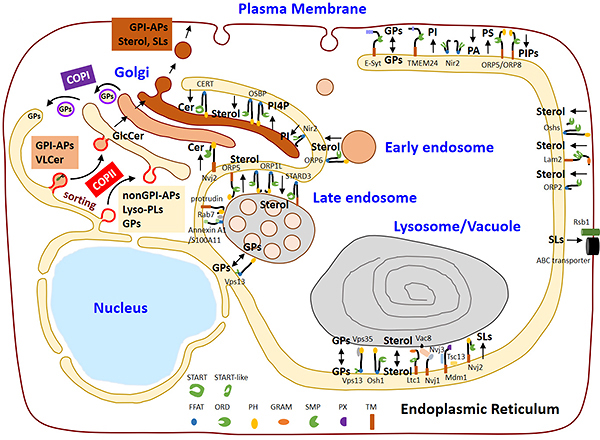 Fig 4: Schematic diagram of lipid transport between endoplasmic reticulum (ER) and secretion/endocytosis organelles
Fig 4: Schematic diagram of lipid transport between endoplasmic reticulum (ER) and secretion/endocytosis organelles

Dr. Funato also discovered a new approach to commercial applications;
research provides him with an enduring excitation
Furthermore, his group succeeded in developing a system for producing a human-type ceramide useful as a raw material for cosmetics and pharmaceuticals, using a budding yeast (Sci Rep. 2015, Producing human ceramide NS by metabolic engineering using yeast Saccharomyces cerevisiae; Advances in Industrial Applications of Yeasts, Koji-molds, and Lactic Acid Bacteria, CMC Publishing). “Budding yeast does not synthesize ceramides having sphingosine in the backbone structure as found in human and other mammalian cells, but instead produces a phytoceramide consisting of phytosphingosine, i.e., a sphingosine incorporating a hydroxyl group at carbon 4 position. With these facts in mind, we proceeded to genetically modify phytosphingosine-synthesizing yeast using a metabolic engineering approach and introduced the human sphingoid Δ4 desaturase (DES) gene for sphingosine synthesis, and controlled the localization of its human protein, and found a method of efficiently producing ceramide NS, which occurs in the human skin.” As some issues remain to be resolved to enable mass production, we will continue to conduct such applied research.
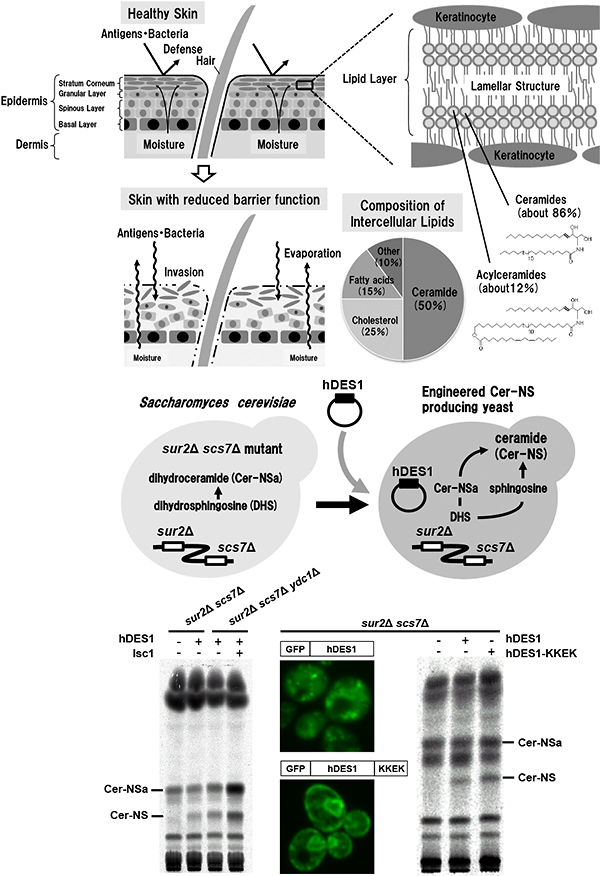 Fig 5: Roles of ceramide in the skin and production of ceramide NS by yeasts
Fig 5: Roles of ceramide in the skin and production of ceramide NS by yeasts
As described above, Dr. Funato is working on his research, both basics and applications. He says, “All my research activities have the ultimate goal of making a discovery that would appear in the textbook and can lead the new generation—To elucidate a still unknown, ubiquitous mechanism of life.
“In yeast research, there are so many challenging issues to be coped with by our efforts. One example is seen in the field of membrane contact sites between organelles (※4), which represents a frontier field not appearing in the current textbook but is expected to see remarkable advances with their diverse roles revealed one after another. We have recently shown that the membrane contact site plays a key role in the intracellular transport of lipids and found that the membrane contact site is also important to the maintenance of organelle morphology. Traditionally, yeast-based research has been leading disciplines of nothing known in any other organisms, making contributions to the establishment of new ideas in life sciences. This role seems to continue from now on, and we hope we will play a significant part by conducting pioneering research with the use of yeasts.”
- ※4:The term organelle refers generically to structures that exhibit some functions in cells. Examples include the nucleus, mitochondria, Golgi apparatus, ER, and lysosome.
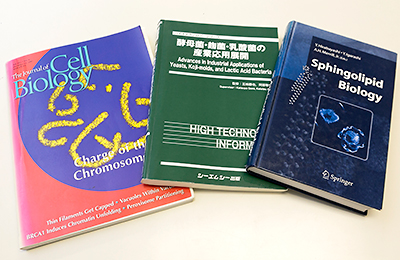 Book authorships:
Book authorships: “Advances in Industrial Applications of Yeasts,
Koji-molds, and Lactic Acid Bacteria” and others
What is the fascination of research? He answers, “I could know for the first time in the world what is unknown by anyone else.” He continues, “I find research to involve an exciting pleasure like treasure hunting. As I clarify something no one knows, I can find out another riddle no one knows. Then, I again set a hypothesis, make investigations, and discover for the first time in the world what is unknown to anyone. I feel an enduring excitation.”
Responding to a question about his future prospects as a researcher, he answers, “I want to discover new basic findings so as to freely control the intracellular abundance, transport, and localization of lipids, and to apply the information to the development of a mass production system for lipids that are useful to the human being.” It should be “an important discovery that could appear in the textbook in the future” as described above and “an achievement that can propose a new paradigm in biology.”
He says, “What I always bear in mind in conducting research is not to follow the fashion.”
He affirms, “It is most important to choose the field that will attract much attention after one or two decades from now, rather than to research in a major field in the current trend. There is no other way to allow us to well compete with big strong research groups outside Japan.” He continues, “It is also important to establish and maintain our own analytical techniques for data that cannot easily be analyzed by other laboratories, and to target genes identified through our own search (not considered an issue by any other research group).”
“Research is an exciting task for me to answer big riddles. I want to resolve issues one after another to contribute to advancement in lipid biology.”
 Opened on July 7, 2021
Opened on July 7, 2021

